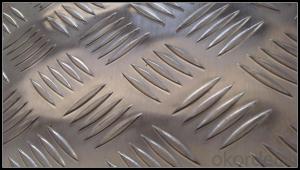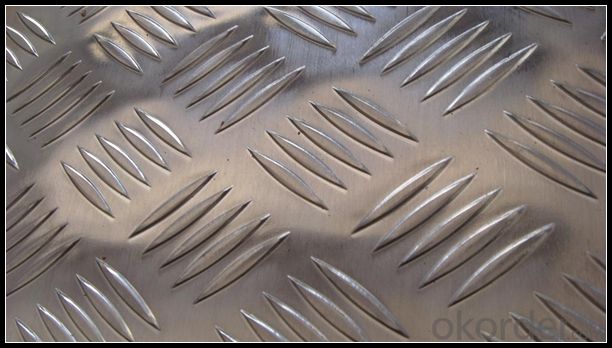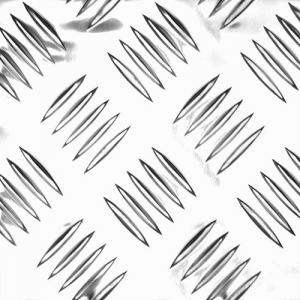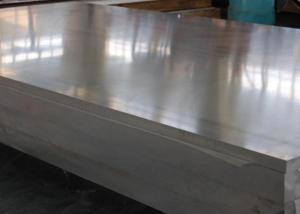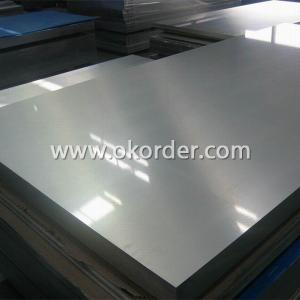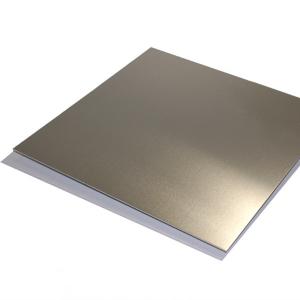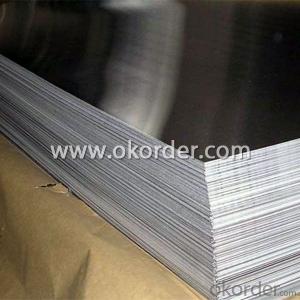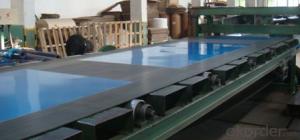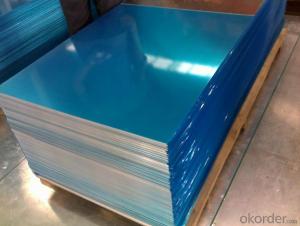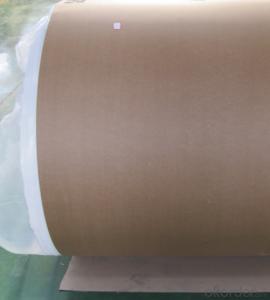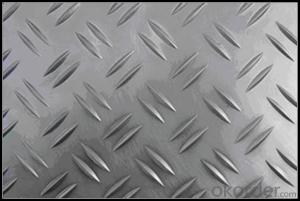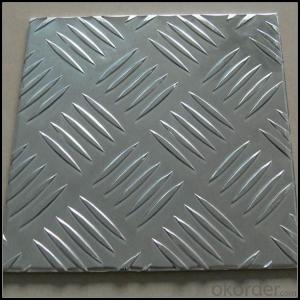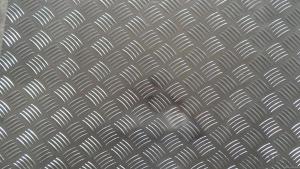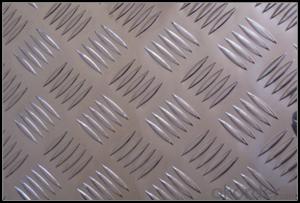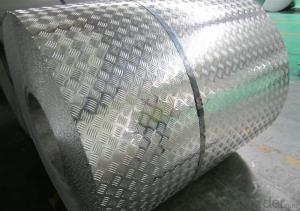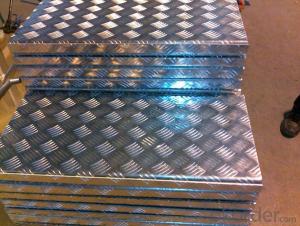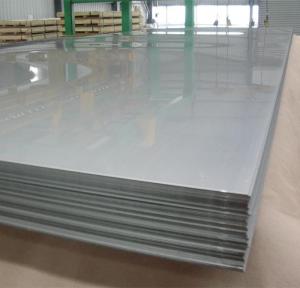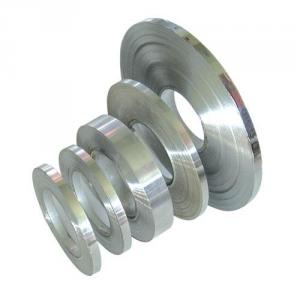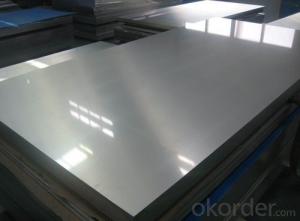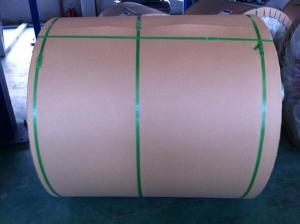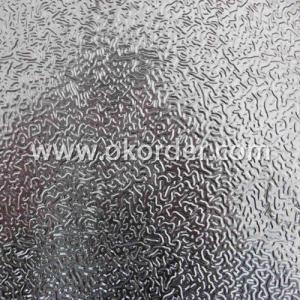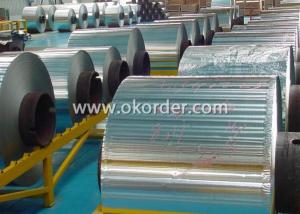Aluminum Sheets in Louisiana - Mill Finish Five Bar Aluminium Tread Sheet 5052 HO for Toolbox
- Loading Port:
- Shanghai
- Payment Terms:
- TT OR LC
- Min Order Qty:
- 5 m.t.
- Supply Capability:
- 1000 m.t./month
OKorder Service Pledge
OKorder Financial Service
You Might Also Like
Specification
Mill Finish Five Bar Aluminium Tread Sheet 5052 HO for Toolbox
1.Structure of Mill Finish Five Bar Aluminium Tread Sheet 5052 HO for Toolbox
Aluminum Sheets are strengthened and cut from raw materials with different alloys, such as AA5005, AA5052, etc. They are easy for processing in different shapes, good in intensity and can be quickly installed. Aluminium Sheets for Energy Saving Curtain Walls are good in energy saving, weather resistance, fire resistance, easy for maintenance and with many colors.
Aluminium Sheets for Energy Saving Curtain Walls are widely used in construction of metal walls, metal ceilings, car decoration, advertizing panels, etc.
2.Main Features of Mill Finish Five Bar Aluminium Tread Sheet 5052 HO for Toolbox
•High intensity
•Easy to be processed and shaped
•Weather resistance
•Anti-pollution & environment protection
3. Mill Finish Five Bar Aluminium Tread Sheet 5052 HO for Toolbox Images
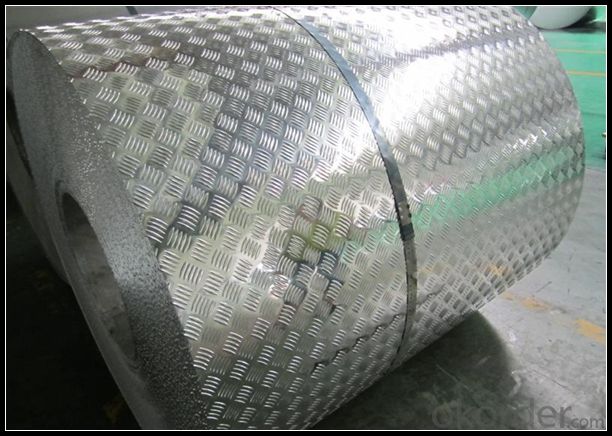
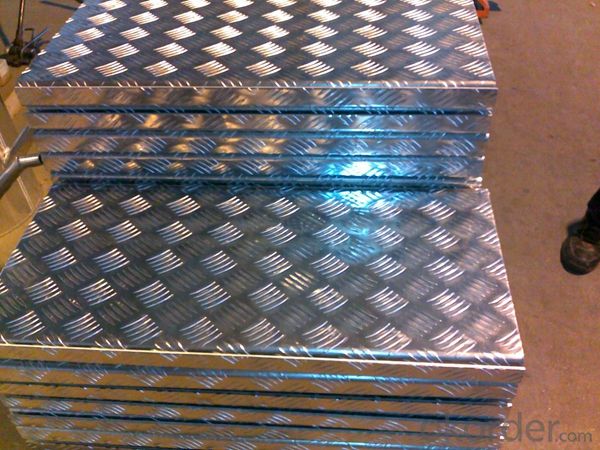
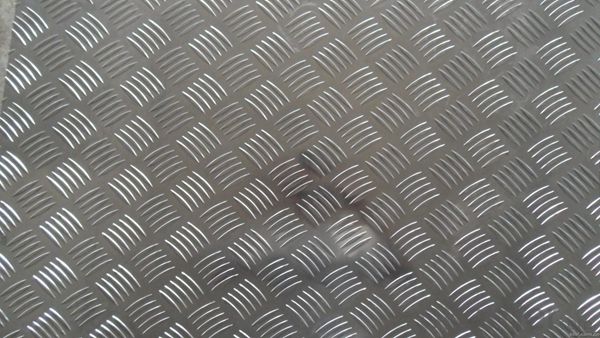
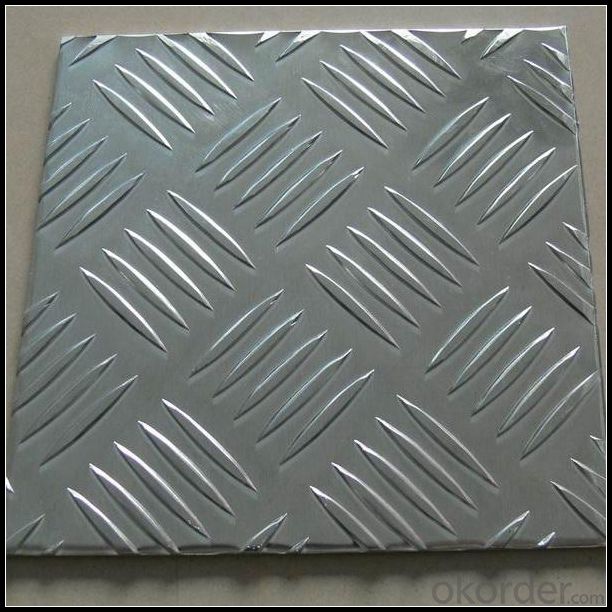
4.Specification of Mill Finish Five Bar Aluminium Tread Sheet 5052 HO for Toolbox
Alloy Number | AA5XXX |
Temper | H12, H14, H16, H18, H22, H24, H26, H32, HO, F |
Thickness | 0.1mm – 500mm |
Width | 10mm- 2200mm |
Standard | GB/T3880-2006, ASTM, ISO, EU standard |
5.FAQ of Mill Finish Five Bar Aluminium Tread Sheet 5052 HO for Toolbox
A.What about inspections to guarantee quality?
For each order for Aluminum Sheets with Mill Finished Surface AA5XXX, we will arrange strict inspection for raw materials, inspection during production and inspection for finished goods.
With requirement of customers, we also can arrange the third party inspection.
B.What about delivery?
We will put order for Aluminum Sheets with Mill Finished Surface AA5XXX in production schedule after order gets confirmed against copy of TT or L/C. Normally it takes about one month for production. Exact shipment schedule is different based on different sizes and quantity.
C.What is the MOQ?
5 tons for each size.
D. Where have you exported aluminium sheets?
We have exported aluminum sheets to many countries. Main markets include South East Asia, Middle East, North America, South America, etc.
- Q: What is the coefficient of expansion for aluminum sheets?
- The coefficient of expansion for aluminum sheets is roughly 0.000022 per degree Celsius, indicating that the aluminum sheet will expand by 0.000022 times its original length with every degree Celsius rise in temperature. It is crucial to take this coefficient of expansion into account in situations where the aluminum sheets may encounter fluctuating temperatures, as it can impact the material's overall dimensions and stability.
- Q: what's the size of aluminum sheet circle?
- Aluminum sheet circle’s size is usually the width of coil stock (mm) : 500-1250,800-1400,1000-1600, thickness of coil stock (mm) : 0.4-3.0,1.0-6.0, weight of coil stock (kg) : 8000,10000, diameter of blank(mm) : 85-660,85-750,100-900. Aluminum sheet circle is broadly used in electron, daily chemical industry, medicine, education and car accessories industry. Electrical appliance, thermal insulation, machine manufacturing, cars, spaceflight, military industry, mould, construction, printing and other industries. Kitchenware, such as non-stick pan, pressure cooker, etc. and hardware, such as lampshade, shell of water heater, etc. they are one of the highly processed aluminum products with largest consumption.
- Q: This question asks for methods to guarantee the safety and reliability of a project when using aluminum sheets.
- <p>To ensure your project's safety and reliability using aluminum sheets, follow these steps: 1. Choose high-quality aluminum sheets with the appropriate thickness and grade for your project's requirements. 2. Ensure proper design and engineering to withstand expected loads and stresses. 3. Use appropriate fasteners and joinery methods to secure the sheets, avoiding stress concentrations. 4. Implement corrosion protection measures such as coatings or anodizing, especially for outdoor applications. 5. Perform regular inspections and maintenance to check for signs of wear, corrosion, or damage. 6. Adhere to safety standards and regulations for aluminum construction. 7. Consult with professionals or engineers experienced in aluminum fabrication for guidance and validation.</p>
- Q: Can 101 aluminum sheets be painted with automotive-grade finishes?
- Yes, 101 aluminum sheets can be painted with automotive-grade finishes.
- Q: Inquire whether aluminum sheets are generally more costly compared to other sheet metal materials.
- <p>Aluminum sheets are not necessarily more expensive than other types of sheet metal. The cost can vary based on factors such as the current market price of the metal, the thickness and grade of the sheet, and the specific alloy used. Generally, aluminum is less expensive than metals like stainless steel or copper, but it can be more expensive than common metals like steel or iron. Prices fluctuate, so it's best to check current market prices for the most accurate comparison.</p>
- Q: Fiber laser cutting machine and carbon dioxide laser cutting machine, which thin aluminum plate effect is better?
- If it is a thin aluminum plate, it is better to use the fiber laser cutter. Fiber laser cutting machine is mainly to cut thin metal, CO2 cutting machine is mainly cutting non-metallic or very thick metal. You can see the families:
- Q: Could ring-pull can be transformed as aluminum sheet?
- Yes
- Q: What are the different methods of surface cleaning for aluminum sheet?
- There are several methods for cleaning aluminum sheets, each with its own advantages and suitability for different situations. Some of the common methods include: 1. Mechanical Cleaning: This method involves using abrasive materials, such as sandpaper or wire brushes, to physically scrub away dirt, oxidation, or other contaminants from the surface of the aluminum sheet. Mechanical cleaning is effective for removing heavy stains or corrosion, but it may leave scratches on the surface. 2. Chemical Cleaning: Chemical cleaning involves using various cleaning agents or solvents to dissolve and remove dirt, grease, or oxidation from the aluminum sheet. These cleaning agents can be acidic, alkaline, or neutral, depending on the specific requirements. Chemical cleaning is often used for removing light stains or surface oxidation, and it is suitable for large-scale cleaning operations. 3. Electrolytic Cleaning: This method uses an electric current to remove contaminants from the surface of the aluminum sheet. The sheet is immersed in an electrolyte solution, and the application of a direct current causes the contaminants to dissolve and separate from the surface. Electrolytic cleaning is effective for removing heavy oxidation, corrosion, or stubborn stains. 4. Ultrasonic Cleaning: Ultrasonic cleaning involves placing the aluminum sheet in a tank filled with a cleaning solution and subjecting it to high-frequency sound waves. These sound waves create tiny bubbles in the cleaning solution, which collapse upon contact with the surface of the sheet, dislodging dirt particles. Ultrasonic cleaning is suitable for removing fine particles, oils, or grease from the surface of the aluminum sheet. 5. Steam Cleaning: Steam cleaning utilizes high-pressure steam to remove dirt, grime, or contaminants from the surface of the aluminum sheet. The high temperature and pressure of the steam break down the dirt particles and sanitize the surface. Steam cleaning is effective for removing oils, greases, or organic residues from the sheet. When selecting a cleaning method for aluminum sheets, it is essential to consider the nature and severity of the contamination, the desired level of cleanliness, and the specific requirements of the application. It is also important to follow safety guidelines and use appropriate protective equipment when handling cleaning agents or working with electrical equipment.
- Q: What are some common applications of aluminum sheets?
- Some common applications of aluminum sheets include roofing, siding, automotive parts, aircraft bodies, kitchen utensils, and electronic casings.
Send your message to us
Aluminum Sheets in Louisiana - Mill Finish Five Bar Aluminium Tread Sheet 5052 HO for Toolbox
- Loading Port:
- Shanghai
- Payment Terms:
- TT OR LC
- Min Order Qty:
- 5 m.t.
- Supply Capability:
- 1000 m.t./month
OKorder Service Pledge
OKorder Financial Service
Similar products
Hot products
Hot Searches
Related keywords
